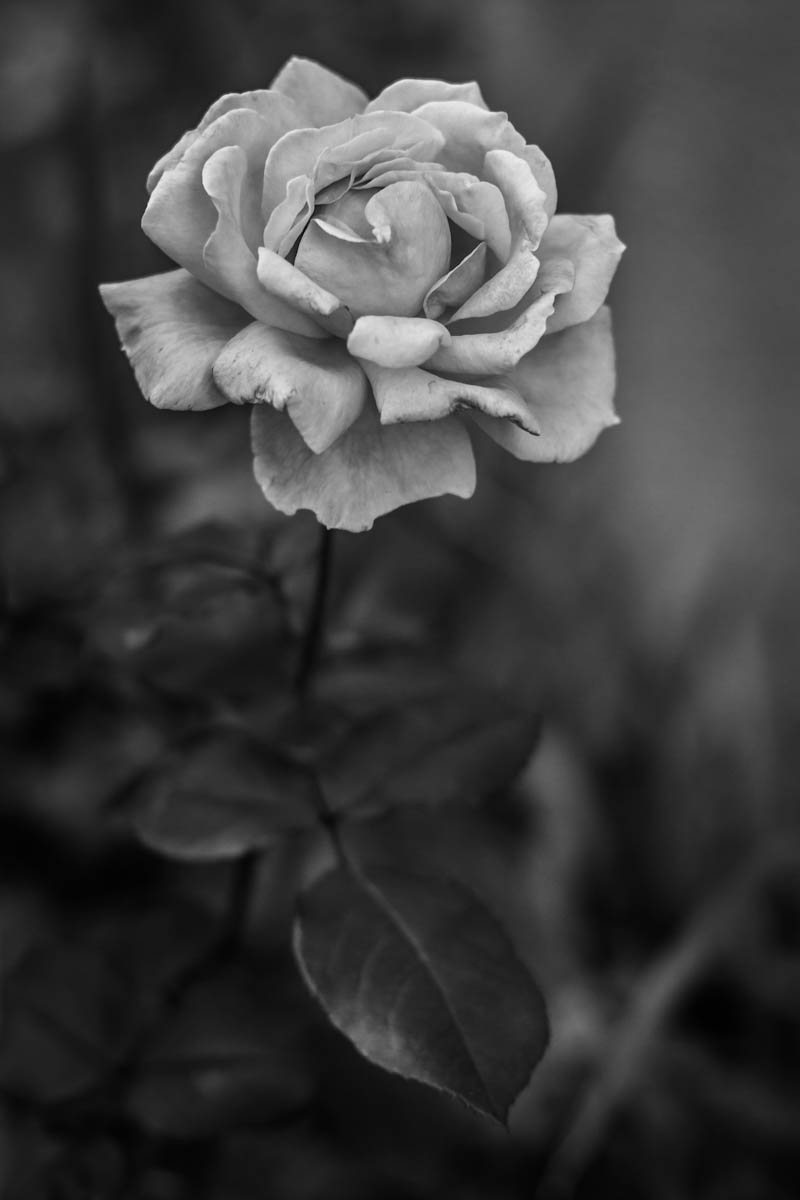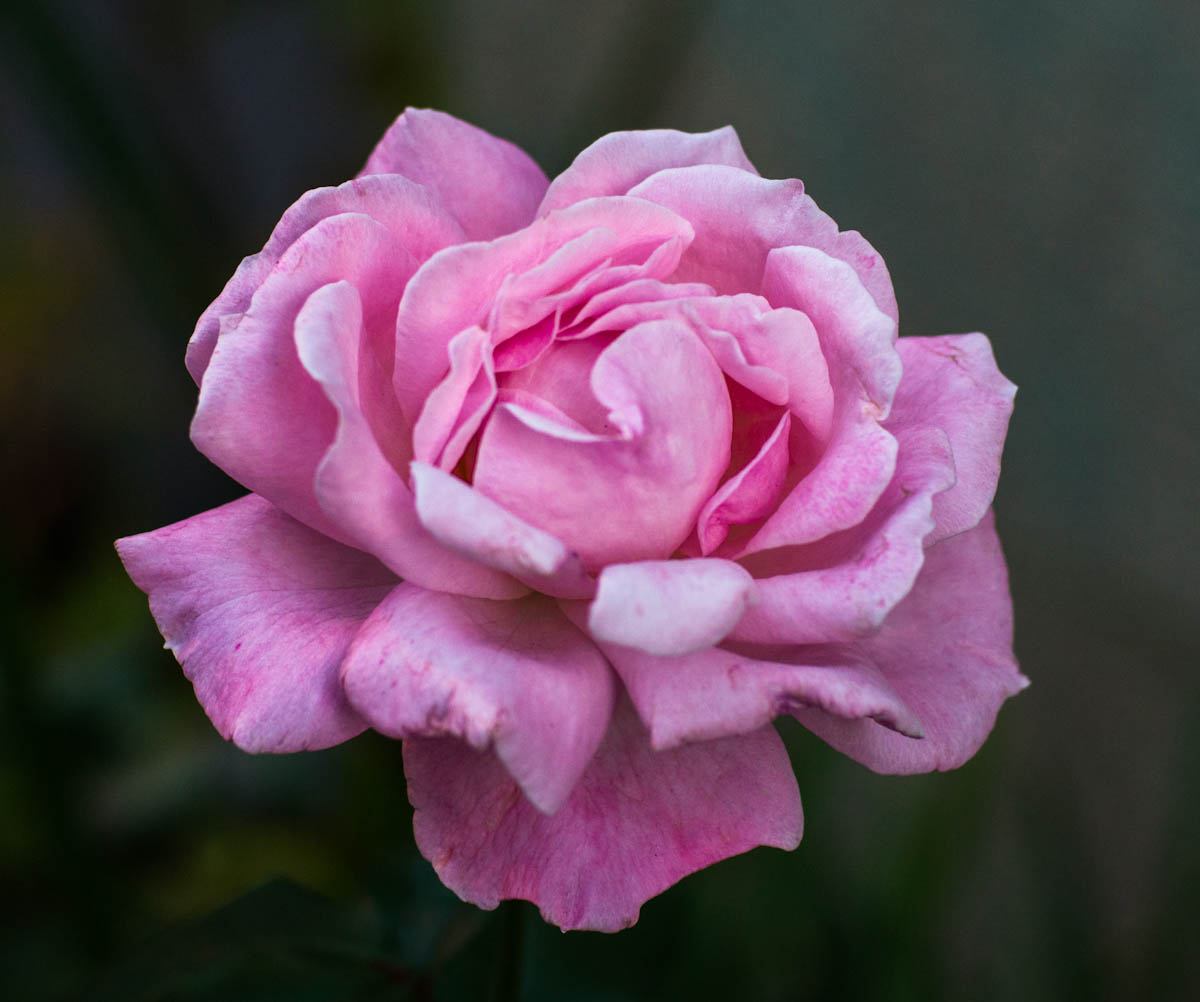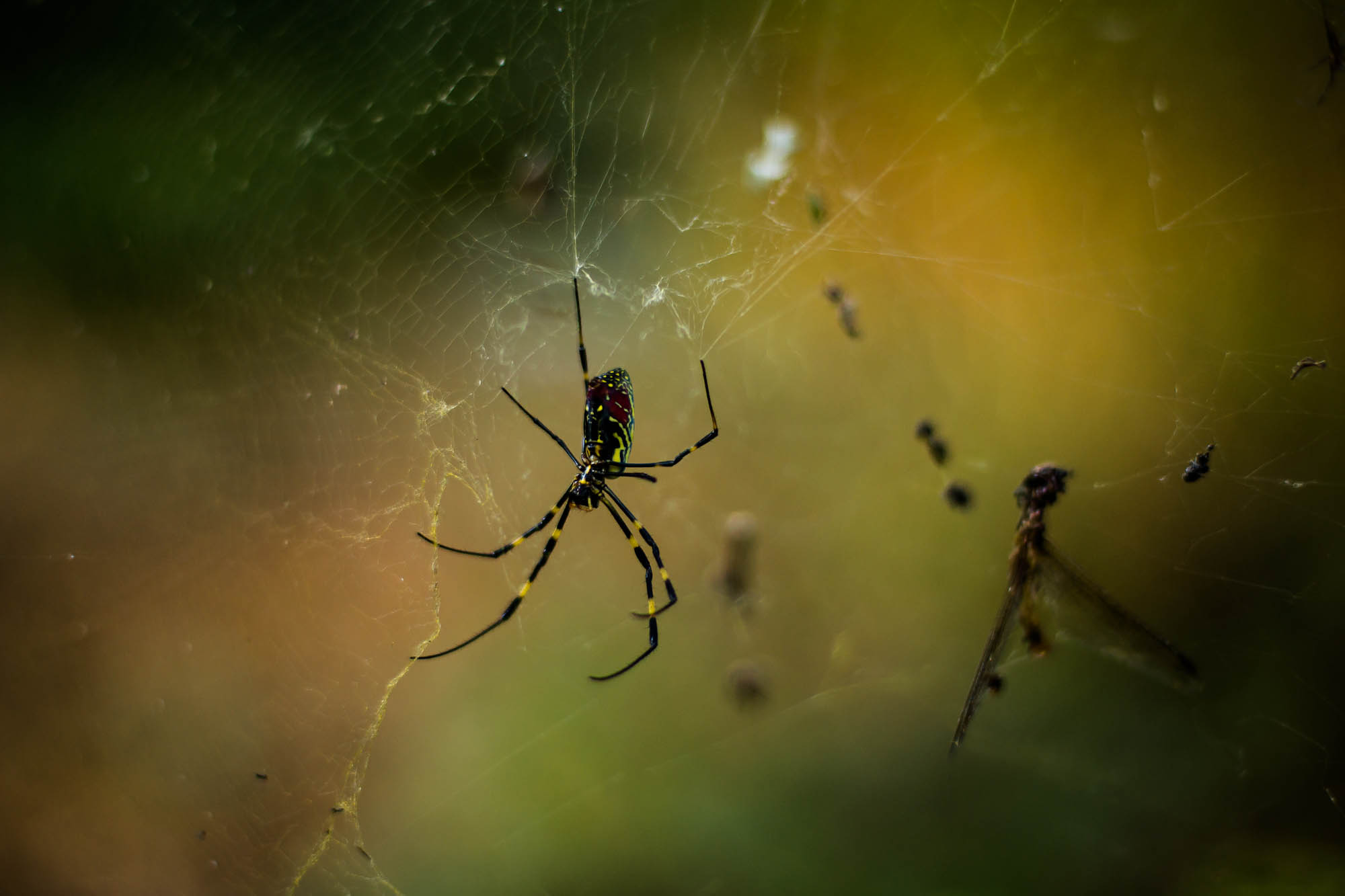These fascinating structures are dotted all around Fukui, holding back the rocks. I estimate the size of each grid to be around 50cm squared. To be honest, they're rather unsightly. The natural folds in the mountainside are broken up by these structures, but they make for an interesting composition.
Read Morenature
Spiralled
I'm not sure what species of flower this is, but it looked pretty interesting from this angle.
Autumnal Aroma
What's that smell? Oh, it's kinmokusei, otherwise known as "Golden Sweet Osmanthus" (also called the sweet olive). This shrub is found all throughout Japan, and blossoms in Autumn, giving off a very sweet and pleasing aroma.
Charlotte was the first (between us) to notice this smell, and track down the source. At first I thought it was because she was lower to the ground than I, but the bushes grow to over 5m tall, so she simply has a keener sense of smell!
The smell really is sweet. Sweet as in sweets. The abundance throughout Japan has made this time of year probably the best smelling in all of Japan's seasons. We've decided that when we have a garden once again, to plant some of these close to a window.
The blue skies of Autumn and Winter are near-perfect
The Chinese character for kinmokusei are: golden 「金」; tree「木」and rhinoceros 「犀」... yeah, I wasn't expecting that either. Tree and rhinoceros together produce the word meaning osmanthus, 木犀, but I have no idea why - I'll try to find out the meaning, as I love the mystery behind the characters.
Unfortunately, the typhoon this week blew all of the golden flowers away. I'll miss these sweet olive trees, but probably not as much as Charlotte.
On growth
These trees are so heavily pruned each year, I'm routinely amazed by their relentlessness. This particular tree stands about 10m tall, and is considerably old. There are two such trees, either side of the University of Tokyo's Main Building, pictured below (photo taken almost 1 year ago with my NEX-C3 & SEL16F28). The tree above is pictured in the far left of this image:
Golden rayed lily of Japan
This isn't the first time I've taken pictures of lilies, and it won't be the last. Usually, if I post photos of lilies, they'll be ones I've bought for Charlotte. Every now and then, we see wild lilies growing here in Japan, but we've never seen anything like this.
Ladies and Gentlemen, I give you the " Golden rayed lily of Japan"
From Wikipedia:
The flower colour is typically white with gold radial markings and orange spots, but variations in flower colour and markings are known. For example the variety platyphyllum, which bears a gold stripe along the tepals but lacks spots. The strongly scented flowers are the largest of any lily species and the largest plants, which can reach 2.5 metres (8 ft), can carry up to twenty of these.
The plant itself was well over 2m long, from ground to tip. Weighed down by its sheer size, and successfully attempting to leave the shadow of the canopy above, the plant pointed perpendicular to the ground, creating an amazing eye-level bouquet.
The hillside was covered in these plants. The smell was incredible. There was quite a strong wind [see video below], no doubt blowing lots of lovely pollen around. Closing our eyes in the warm breeze, we listened to the forest cicadas scream their summer song.
Mantis
I saw this little guy scuttle up to the top of a bollard. Only around 1inch (2.5cm) long, I crouched down and made use of the "touch-focus & capture" ability of my new Nokia Lumia 920. I'll do a review of the phone after I've had a little more time with it, but so far I am finding a lot to like. The camera is obviously pretty decent, as there's good detail on the mantis, and a pleasing out-of-focus background.
Rose
Rose │ NEX-7 & Canon FDn 50mm F1.4 │ 50mm, 1/60, ISO 500, f/2, Lightroom 4.2 Apartment hunting - an event I've never enjoyed. Mainly because it's never really exactly what I want, but rather just a stop-gap until I buy a house somewhere. Apartment hunting in Japan is an absolute nightmare, and one I will complain about in full in another post, if you're interested. In short, when moving in, we will have to pay between 3 and 6 months' rent up front - never to be seen again. Ouch.
Whilst out looking for somewhere to shelter us for the upcoming year, I saw this rose. It was there, all by itself, at the side of the road. I had to get a quick snap; and I was rather pleased with the results:
Kumo
Kumo│ NEX-7 & Canon FD 50mm F1.4 │ 50mm, ISO 400, f/8, 1/4000, 0EV Learning a language other than one's mother tongue is an undertaking I would recommend to all. After a certain point, not only is one able to converse with people from completely different cultures, upbringing and backgrounds, but one will also undergo a kind of self-reflection like no other. That is to say, I now study and understand and approach the English language in a way I never did before. Learning English as a child, I've basically forgotten how I did so. Trial and error, sure, but I was also learning how to walk, read, count, ride a bike... etc. Learning a second language, as an adult, requires a different set of skills and a completely different approach to that of a child. I cannot learn Japanese simply by speaking it with my parents or class mates, as my parents don't know more than "konnichiwa", and I don't go to school. I need a much more structured and methodical approach, utilising my current skill set. Word association is one such technique.
For example, when I started learning English, I knew no words at all, in any language. However, I now have the English language at my disposal, and have images and metaphors in abundance, to associated imagery with the Chinese characters, or Kanji, in Japanese. Without the Kanji, spoken Japanese can be both ambiguous and down-right confusing.
Why the diatribe on the learning of Japanese? Well, it's because the words for "cloud" and "spider" have exactly the same sound in Japanese; Kumo. Kumo is cloud, and kumo is spider. "Oh, look at that huge kumo", someone shouts. Do they know I am a climate scientist... or are they warning me as a potential victim of arachnophobia? The message becomes clear with context, of course, but also when written. 雲 is cloud, and 蜘蛛 is spider. Completely different!
Well, the above image is of the former, and the lovely photo below is of the latter. I did it that way around so as to not scare anyone off!





![Mantis | Nokia Lumia 920 | 26mm [35mm Equivalent] 1/100s f/2.0 ISO100 | Edited in Lightroom 5](https://images.squarespace-cdn.com/content/v1/51a5fafae4b0643b1caaa8d3/1373172883420-4GQ127X6S5003447O7XP/20130706-WP_20130706_003.jpg)



